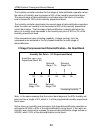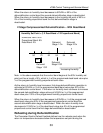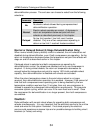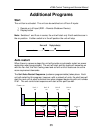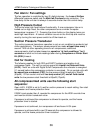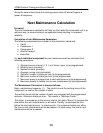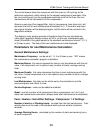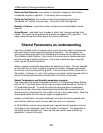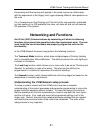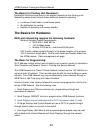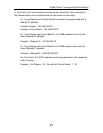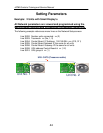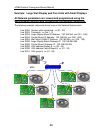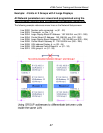
iCOM
Controls Training and Service Manual
Starts per Day Optimum: the number of individual component starts that is
considered as good or optimum. To be set by Service Engineer.
Starts per Day Worst: the number of individual component starts that is
considered as “hunting” or worst case. To be set by Service Engineer.
Number of Alarms: counts the number of alarms occurring between service
intervals.
Actual Bonus: calculated from “number of starts” and “average working time”
values. The result can be positive (for a bonus) or negative (for a penalty). This
value influences the time remaining to the next maintenance.
Shared Parameters an understanding
If we have multiple units in the same room (zone) they will need to communicate
with each other to avoid opposite operational functions. This will prevent the
cooling and heating functions from operating at the same time on different units.
This condition called “fighting “ often exists in the room due to imbalanced loads
and the crossing of airflow conditions. This is also considered when using the
Lead/ Lag and Cascade functions.
When a system is setup the parameters are shared by all units. The unit selected
as the Lead Unit (#1 unit) is used to program the system, if program parameters
are not set in this unit they will be ignored. This is true for all of the active units in
the system. However, if a unit in the system is not active it will be ignored until it is
active and the parameters will be shared within 2 minutes of activation.
Shared Temperature and Humidity parameters example:
Two units share the master Temperature Control (1/2) Proportional Band Setting
such as 10°F, and then each unit will use the master band divided by 2 (units) or
5°F proportional bands. To avoid the cooling hunting process or compressor
cycling too quickly, the primary temperature proportional band needs to be set
wide enough to compensate for the number of units in the system setup. Note that
shared parameters are not used on single unit applications.
Heating, humidification, and dehumidification will follow the same example with
each function starting in each unit one after the other or in sequence.
In Chilled Water units all valves operate are in parallel but this operation may be
overridden by the setting and use of the Supply Limit sensor. This parameter is
controlled by the individual unit. Here we may see uneven valve positioning
(operation) in some of the units.
40



